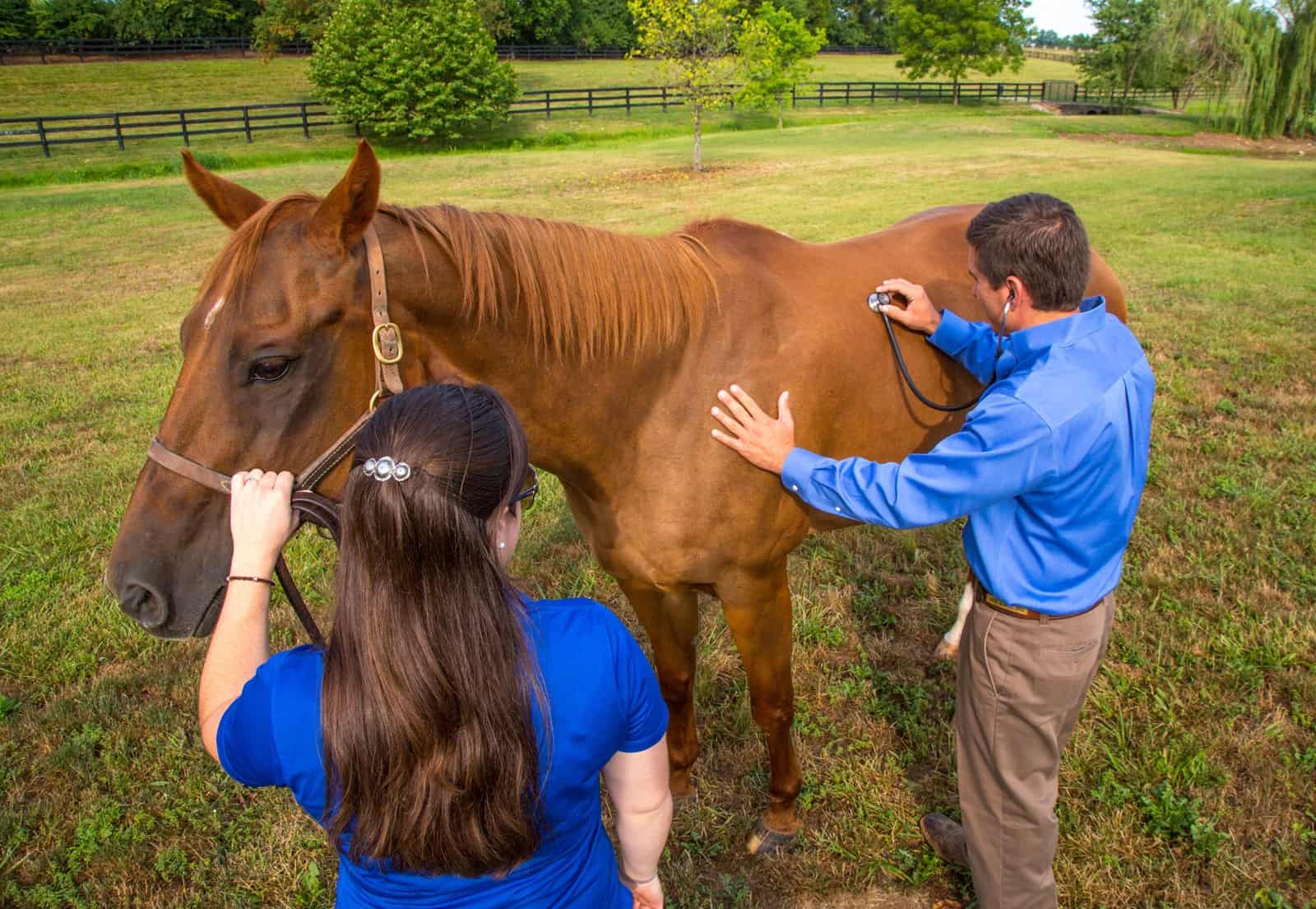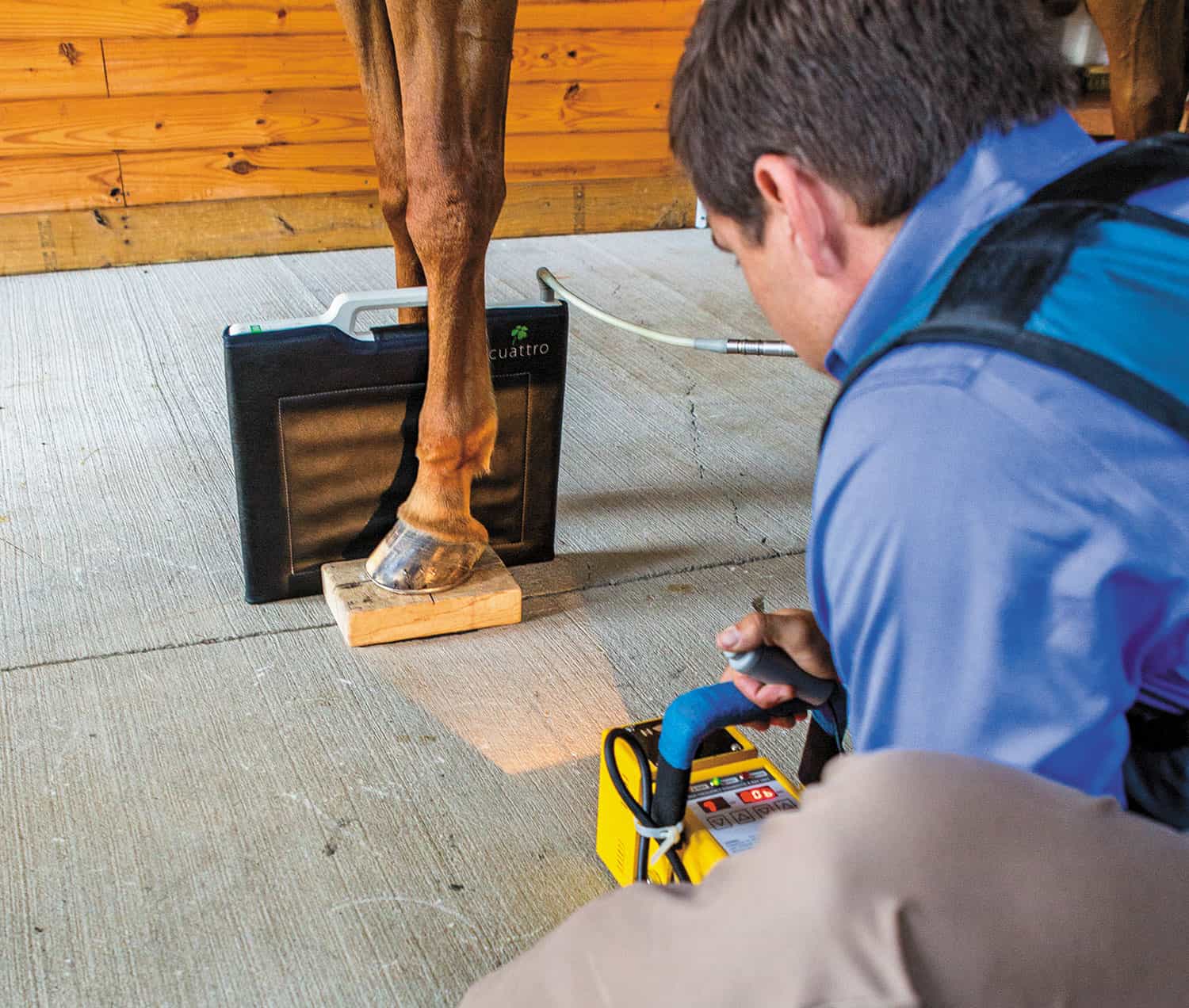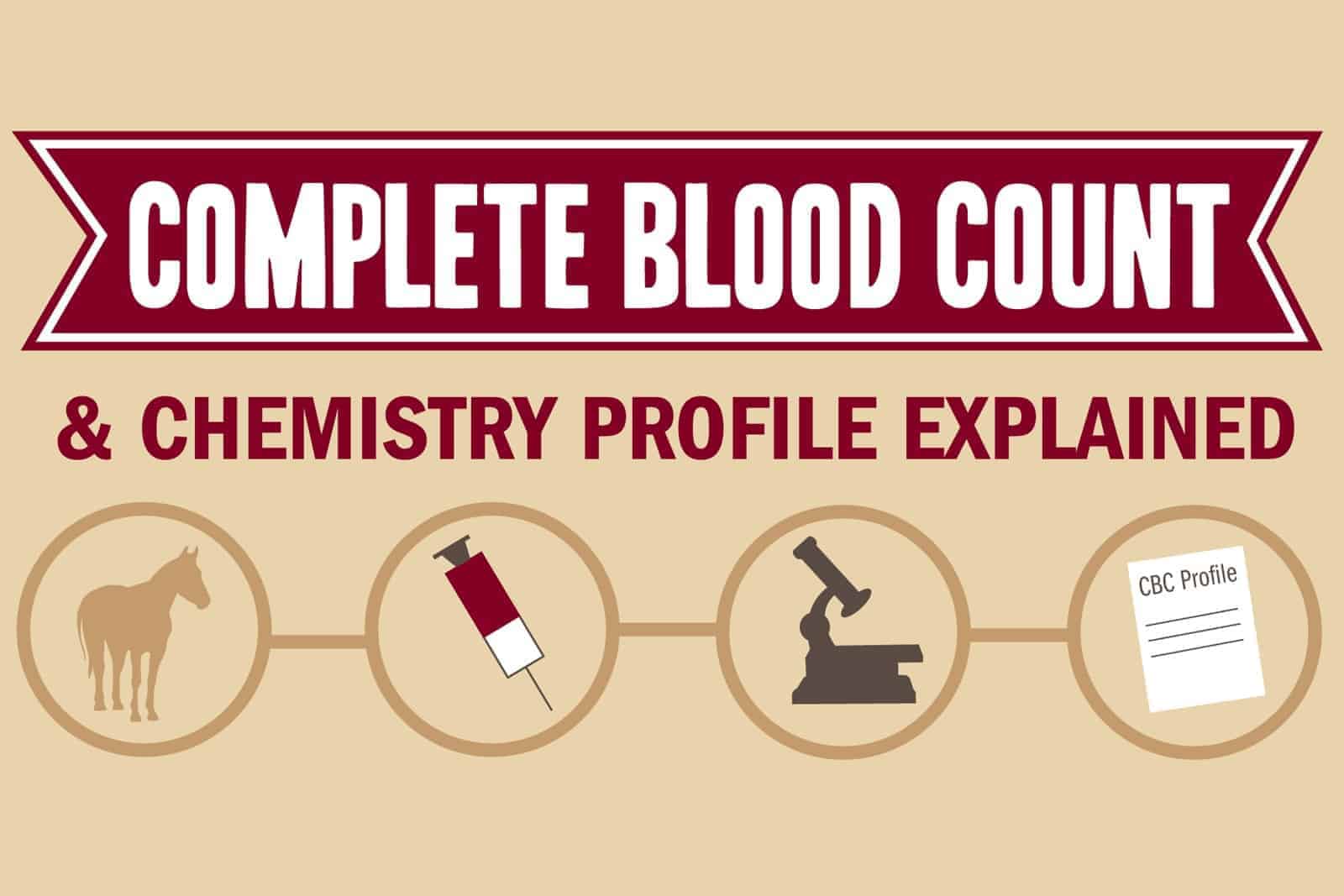The Buyer’s Guide to Prepurchase Exams
- Topics: Article, Behavior & Handling, Body Condition, Dental Problems, Diagnostics and Technology, Eye & Ear Problems, Heart & Cardiovascular Problems, Horse Care, Lameness, Other Eye Problems, Other Respiratory Problems, Purchase Exams, Radiography (X rays), Respiratory Problems, Sales, Sports Medicine, Vet and Professional, Working With a Veterinarian

He might seem perfect—but before you call him yours, determine if a horse is sound and serviceable for the job at hand and if you can live with his inevitable flaws.
After months of meticulous horse-shopping, you’ve finally found the perfect fit. You’re so excited you could hook up the trailer and load the horse before the ink on the check dries. However, there is one step in the buying process that you cannot skip if you’re wanting to make an informed decision: the prepurchase exam.
Over the years the prepurchase exam—once reserved for high-dollar sport and racehorses—has evolved to encompass the evaluation of any horse that changes hands. As all horsemen, from professionals to weekend trail riders, have become better informed about their horses’ health, the prepurchase exam has grown to be a more common occurrence. With the advancement of technology, along with the ability to bring it to your farm, the prepurchase exam has also evolved into a highly specialized evaluation of a horse’s health and soundness.
Before You Start
The most important thing to remember about a prepurchase exam is that it is not a pass-or-fail test. It is a snapshot in time that tells you how healthy the horse is on that specific day. It can provide hints as to how the horse will progress, but it cannot predict the future.
Also, keep in mind that no horse is perfect. If examined rigorously enough, fault can be found with any horse. What you are trying to determine is if the horse will be sound and serviceable for the job you intend for him to do and if you are willing to manage existing problems. Discuss any imperfections with your veterinarian, and ask what resulting issues you might encounter down the line and what treating those would entail. With some problems the risk might be worth the reward for your specific scenario. As Alexander M. Chan, VMD, owner of AMC Equine, in Westchester County, New York, says, the prepurchase exam should serve to “help the client make an informed decision.”
An important part of that decision is choosing the veterinarian who will perform the exam. He or she should be an equine-specific veterinarian who has knowledge and experience working with the breed or discipline of the horse you’re trying. This individual should be impartial; he or she should never have worked on the horse, should not perform work for the seller or agent, and should have no financial stake in the sale. The veterinarian performing the exam works for the buyer, is paid by the buyer, and reports directly to the buyer. And because the buyer is paying for the exam, he or she owns the rights to the information obtained, including all findings, radiographic images, or test results. The veterinarian is under no obligation to share the exam results with the seller or agent unless given express permission by the buyer.
When scheduling the exam, make sure the seller or agent is aware of the appointment so they have enough time to discontinue administering any medications that could alter the exam results. It is also important to discuss with your veterinarian what exams you would like performed, as the process can be as simple or as extensive as you wish. Naturally, the expense of the testing rises with the scope of the exam. There is no rule of thumb as to how much you should spend on a prepurchase based on the price of the horse, and it is even possible that an extensive exam could match or exceed the horse’s price. How much you spend is your choice, but recognize that the early investment could save you money in the long run.
The Basic Exam
The minimum prepurchase examination should include recording a thorough medical and performance history as well as completing a full physical evaluation.
“The single most important portion of the prepurchase exam is the veterinarian’s clinical evaluation,” Chan says. “Once the horse has been deemed serviceable for the intended level of use after assessment of its movement, additional diagnostics may be optionally pursued to further assist in the decision-making process.”
Chan says the veterinarian should:
- Assess overall body condition, as both poor (thin) condition and obesity can present health implications. Poor body condition could be due dental abnormalities preventing the horse from grasping and chewing food properly, or it could indicate the horse is a hard keeper that might cost more to feed in the long run. Obesity, on the other hand, could be genetic or simply due to too much food and not enough exercise. Regardless of the cause, there is a very strong link between obesity and the hoof disease laminitis, especially in ponies and older horses. You must manage these horses’ diets and monitor their weight carefully.
- Evaluate the horse for evidence of previous injury or surgery. For instance, close examination of the skin might reveal scars from a colic surgery or other procedure. Horses that have colicked in the past—especially those requiring surgery—are more likely to experience colic episodes in the future.
- Check the oral cavity for tooth abnormalities that could impact how much dental care the horse might need in the future. This will also give your vet a chance to verify the horse’s age.
- Examine the horse’s eyes for superficial lesions on the cornea, anterior chamber (the space between the cornea and the iris), and lens. A fundic (or base of the eye) exam should be performed to evaluate the posterior chamber and the optic nerve at the back of the eye. (See TheHorse.com/114703 for more on eye exams during the prepurchase.)
- Listen to the heart carefully from both sides of the horse to detect subtle murmurs or arrhythmias that could indicate cardiac problems. Unfortunately, the degree of cardiac abnormalities a veterinarian hears does not always correlate with severity of cardiac disease, so if he or she suspects problems, further testing is needed (more on this later).
- Listen to the horse’s lungs for any potential respiratory unsoundness. A horse’s lung sounds can be difficult to hear when he is at rest. Because we can’t ask him to take deep breaths like our doctors do when performing human physicals, your veterinarian should perform a rebreathing exam. This involves placing a large garbage bag over the horse’s nose. As the horse breaths in expired carbon dioxide, his brain signals him to take deeper and slower breaths, making it easier to hear the lung sounds. Alternatively, the practitioner can auscultate (listen to) the lungs after the horse has exercised and is breathing heavily.
During the initial exam your veterinarian can also make notes regarding the horse’s temperament and behavior. Be on the lookout for any undesirable stable vices such as weaving or cribbing.
Buying to Breed
Take special considerations during a prepurchase exam if you intend to buy the horse for breeding, either as a primary function or as a job when his or her athletic career ends. If the horse is a mare, it is best if you have these procedures performed when she is cycling.
A mare’s breeding soundness exam consists of examining the vulva’s external conformation. Veterinarians commonly evaluate the cervix, uterus, and ovaries via rectal palpation and ultrasound scanning. Your vet should examine the cervix for its tone, competency, and any tears that previous foalings might have caused. The uterus should be palpated for tone and scanned for abnormal fluid accumulation and cysts that could later be confused for a pregnancy. The ovaries should be thoroughly examined for size, structure, and developing follicles. Your veterinarian can also perform more extensive testing such as a uterine culture or biopsy, which could reveal any bacterial or viral challenges that could impact fertility.
Stallions intended for breeding should also undergo breeding soundness exams. During this exam your veterinarian will collect the stallion’s semen, often using a breeding phantom (or dummy) and a teaser mare. He or she can evaluate the stallion’s libido and willingness to breed, as well as any mechanical issues, such as post-breeding lameness, that might arise. His semen should be examined for sperm morphology, concentration, and motility. If you hope to ship the stallion’s semen, examine the sperm after cooling or freezing.
—Joan Norton, VMD, Dipl. ACVIM
Advanced Imaging and Testing
In addition to a general physical exam, most veterinarians recommend performing a lameness exam, especially if the horse is an athlete. For this reason it is a good idea to choose a veterinarian experienced in lameness. The horse’s conformation as he stands can give early clues as to how he will move. The veterinarian should examine the hooves carefully for integrity and balance and use hoof testers to identify any soreness in the soles. He or she should evaluate the gait at the walk and the trot and perform flexion tests to detect any lameness. Watching the horse work in circles or even under saddle can reveal less obvious gait abnormalities.
“Soundness should be evaluated at different gaits, over a variety of surfaces, in hand as well as under saddle, on a straight line and in circles,” Chan says. “Horses can exhibit subtle abnormalities in movement under specific circumstances (e.g., in collection, in a particular direction, with rider weight, after flexion, when backing up, etc).”
Again, the implications of a lameness depend on the horse’s intended job. Two horses could have the same prepurchase results, but what might be acceptable for a child’s walk-trot pony would be a deal-breaker for a Grand Prix show jumper.
Radiographs are a common, if not recommended, part of prepurchase exams. Which parts of the limb your veterinarian images depends on several factors.
“Depending on the situation, a set of survey X rays may be taken to corroborate the veterinarian’s clinical findings, to uncover potential sources of lameness, or simply to serve as a baseline,” Chan says of his practice. “If a ‘standard’ set of films is cost-prohibitive, I make my recommendations on which parts of the horse to radiograph based on my clinical exam, the discipline or intended use, the breed, the age, and finally, resale considerations.”

A standard set of X rays can range from just a few views (minimum of front feet, fetlocks, and hocks and/or stifles) to the most extensive package of more than 36 images, such as that required by many auction houses before a racing prospect goes to the sales.
While more advanced imaging is not considered standard for a prepurchase exam, some buyers request ultrasound evaluation of forelimb tendons and ligaments. Buyers participating in sports such as dressage and show jumping, where tendon and ligament issues can impact performance, might benefit from these additional exams. Chan says he recommends ultrasound exams if he detects an abnormality on palpation of the soft tissues, the horse has a history of tendon or ligament injury, or radiographs do not explain a lameness. Nuclear scintigraphy (bone scan) is available at larger equine hospitals and might help the veterinarian identify areas of bony remodeling that have not caused obvious abnormalities in the lameness exam or radiographs. Another advanced diagnostic modality your veterinarian might pursue based on the initial exam is upper airway endoscopy. It’s especially important to perform this exam on horses that make abnormal breathing noises during work; it can be done with the horse at rest, on a high-speed treadmill, or under saddle.
If the veterinarian hears a heart murmur, he or she typically recommends performing an echocardiogram (heart ultrasound). But even then it can be difficult to predict if the abnormalities detected will alter the horse’s performance or if they will progress over time. So while many murmurs might just be incidental findings that will not impact the horse’s career or life span, owning a horse with a murmur might mean scheduling annual exams to track its development. An electrocardiogram (ECG) can help the veterinarian diagnose any arrhythmia detected on auscultation, and in some cases he or she might elect to perform an ECG when the horse exercises or order a 24-hour continuous ECG (via a Holter monitor) to determine an arrhythmia’s significance.

Your veterinarian might also run blood tests. Proof of a negative Coggins test for equine infectious anemia is a must and required by law for any horse moving from state to state. A complete blood count and serum chemistry can give some indication of the horse’s overall health. A veterinarian can also perform a drug screen to detect any recently administered medications that could alter the horse’s performance or soundness. The most common medications tested for include anti-inflammatories such as phenylbutazone and flunixin meglumine, both of which can mask lameness. He or she can also identify steroids and short- or long-term sedatives on blood or urine tests. You can order these tests individually or grouped as part of a more extensive panel. Drug testing can be exorbitantly expensive, so in select cases Chan recommends instead asking to keep the horse on trial to see how he behaves. Long-term sedatives such as fluphenazine or reserpine can last for weeks to months, however, and veterinarians recommend testing if you’re concerned these drugs have been used.
Take-Home Message
Again, the prepurchase exam is not meant to be a pass/fail hurdle. It is a data set that helps you as a buyer make the most informed decision about your purchase. Decide how many different examinations and tests you want your veterinarian to perform based on your comfort level and financial goals. Work with your veterinarian to glean the most information possible for your budget. All in all, the prepurchase exam will help you determine if the horse you think is your perfect match is one that you and your veterinarian can manage together to remain healthy and successful in his job.
Written by:
Joan Norton, VMD, Dipl. ACVIM
Related Articles
Stay on top of the most recent Horse Health news with















